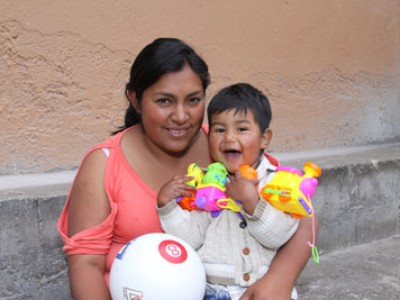
Child Survival Program Celebrates the True Meaning of Christmas
María lives in the La Victoria Alta neighborhood, a place with limited access to public transportation and public services. It is one hour away from Quito’s downtown area, a place where the cold weather is so intense that people feel chilled to the bone. María is one of the hundreds of mothers who cry at Christmas time.
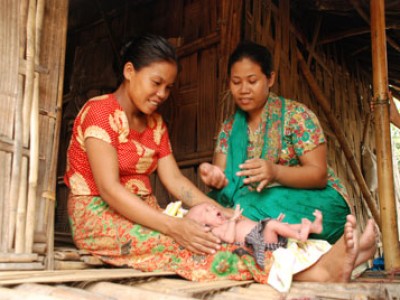
This is How You Are Saving Lives in Bangladesh
Mothers in the Child Survival Program (CSP) are under the care of an expert CSP implementer during deliveries. This decreases the chance of infant mortality. The awareness program, baby training and other assistance (like nutrition and baby kits) provided through the program helps ensure a healthy mothers and babies.
Giving Birth in the Developing World
Most Papuan women still give birth with traditional methods in a traditional Papuan house made of wood with a grass bed. They prefer to give birth at home because they are also afraid of the service from health workers who are not always friendly. Many believe that it is more efficient to give birth at home alone or with help of someone who lives nearby.
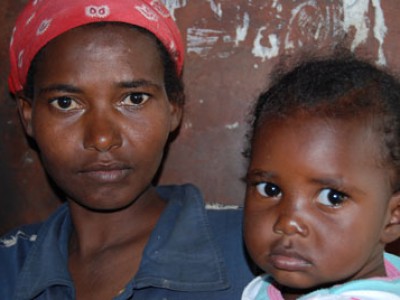
The Life of an Abducted Bride
Despite the Ethiopian government’s efforts to eradicate bridal abduction, it’s still frequently practiced in some rural areas. Bridal abduction has been illegal since 2005, but outside of the capital, the law is interpreted very loosely by the police and judges. Hence, girls as young as 11 years old are abducted and are given in marriage to men much older than them.
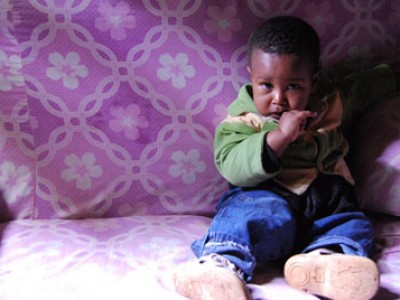
Babies
These babies are beneficiaries of our Child Survival Program.
“Before I formed you in the womb I knew you, before you were born I set you apart.” —Jeremiah 1:5, NIV
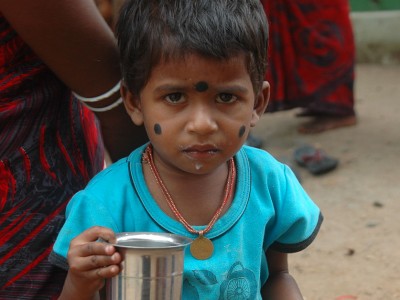
Saving Baby Girls From Infanticide in India
The 21st century has witnessed a great rise in development around the world. Communications and scientific research are developing at a rapid pace. The world is moving toward great change in culture and lifestyle. Gender equality is becoming common in many places, and girls are achieving heights once thought not possible.
However, even as the world is moving toward progress, the age-old social evil of female infanticide still shows its ugly face in developing countries such as India.
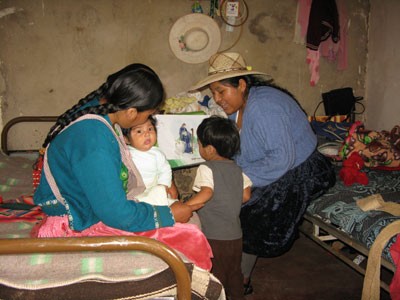
Child Survival Program: Helping Heal the Wounds of Unplanned Teenage Pregnancy
In the countryside of Bolivia, it’s normal to have your baby at home with the help of relatives or neighbors, rather than going to a hospital. But being only 6 months pregnant, 14-year old Marta wasn’t prepared. She had gone to the hut with her two younger brothers to put her family’s animals away, when she went into labor. Her two little brothers didn’t know how to help. They were scared and cried. Marta had her baby alone in a hut.
What Difference Does the Child Survival Program Make in the Lives of Mothers and Babies?
Marisa is a member of a the Lawa tribe, a minority group with its own distinct dialect and tradition found only in certain isolated areas in northern Thailand. She lives in Laoop, a village located in a very high, remote area.
Even though Marisa finished grade nine, the quality of education she received at the school in her village was poor compared to the education she could have received at a school in the city.
As a member of a minority tribal group, Marisa’s options after school were limited. Most villagers in Laoop are educated only until grade six or nine, and after their brief education they usually find jobs and begin working. Marisa chose to work for a brief period, and when she turned 18 she married one of her neighbors and began her role as a housewife and a mother.
“Being pregnant made no difference to my work schedule. I still worked in the fields because I believed that it would strengthen my unborn child. I also ate the exact same meals I had before I was pregnant. My meals consisted of rice and boiled vegetable with spicy sauce. I did not eat anything special.
“After I got home from the hospital, I went to a health center nearby my village to attain information on how to raise my baby to be healthy and how to increase his weight. At the health center the nurse assistant briefly informed me on some basic guidelines, but she explained the information too quickly and I only understood a little of what she said.”
Tending a Kitchen Garden: Lessons From a Child Survival Program Mom
What does a kitchen garden have to do with increasing the chance a child lives to see age five?
Kitchen gardens are a part of the “empowerment training” that moms and caregivers receive at the Kawangware Child Survival Program (KEC28), and Caroline is a mom who is benefiting from this training.
Outside of her 10′ x 10′ home, Caroline maintains a kitchen garden, something she learned to do in the Child Survival Program.
The garden provides food for her six-member family and requires tending to make sure bugs don’t destroy the vegetables, along with the hope she and her husband have for something more. When we ended our home visit with Caroline and her family yesterday,
“her husband proudly told us that his wife was working hard and that together they were changing their situation. He thanked us for coming to visit their house that they lived in “for now.” He said “for now” because he told us that he knew that they wouldn’t be there forever. The tools they had and the skills they learned were helping them break free from the poverty that surrounded them.”
Read more of Caroline’s story on Brad Ruggles blog – Learning How to Live.
Support a Child Survival Program for $20 a month and you can help empower moms like Caroline.
Empowering Moms With Charcoal Dust and Dirt
One of the ways that the Child Survival Program empowers mothers is by offering literacy and economic training to help them better provide for their families. 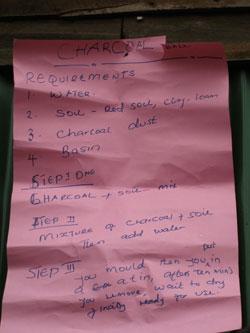
Jackline is a mom at the Kawangware Child Survival Program which is part of the Kawangare Child Development Center.
The economic training she received taught her to make charcoal from charcoal dust and dirt and then use the charcoal to roast corn to sell on the side of the road.
Roasting the corn allows Jackline to make about $1 a day to feed her two children, including 14-month old Flavian.
We visited the Kawangware Child Survival Program today, met Jackline and watched her demonstrate the skill that helps her provide for her children.
We also met Caroline, another mom in the program. She was excited to show us the income generating activity she was taught. You can read Caroline’s story on Brad Ruggles blog – Learning How to Live.
Support a Child Survival Program for $20 a month and you can help empower moms like Jackline and Caroline.
Help Us Rescue Babies in Haiti
Four million babies die each year in the first month of life. Half of these babies die in the first 24 hours of life. And in the aftermath of last month’s earthquake in Haiti, the risks for babies and toddlers throughout the country have increased.
As the government focuses on the immediate and critical needs facing the country, please help us help Haiti. Help us rescue babies and toddlers from these startling infant mortality statistics, statistics that don’t care about the recent crisis in Port-au-Prince … because they are a crisis of their own.
Help us rescue babies and toddlers by supporting a Child Survival Program in Vertieres, L’Estere, Cap-Haitien or Fauche.*
Your support of $20 a month provides vulnerable babies and toddlers:
- nutritious food and supplements
- immunizations
- ongoing health care
- physical, emotional, and spiritual development
And it provides mothers and caregivers:
- prenatal and ongoing health care
- nutritional training
- parenting-skills training
- the loving embrace of a local church
As always, our local church partners carry out our ministry, and in the case of the Child Survival Program, they contextualize the program to each situation individually.
Our church partners provide the critical interventions and build the open and trusting relationships with the mothers and caregivers that are critical to our success. Survival Specialists from the churches visit homes and educate mothers in their own environment. There, the actual needs of the baby, mother, family and community are known, seen and met accordingly.
Support a Child Survival Program in Haiti.
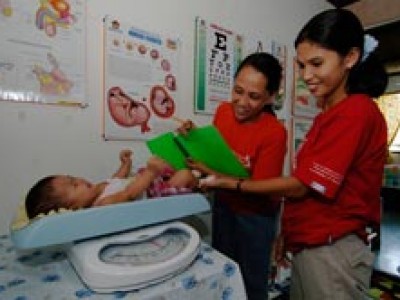
Child Survival 101
Being a mother takes courage. Being an expectant mother in desperate poverty takes courage and so much more.
Each year more than 500,000 mothers die in childbirth or from pregnancy complications, most of which are preventable. The babies who survive while their mothers die are much more likely to die in their first year of life.


